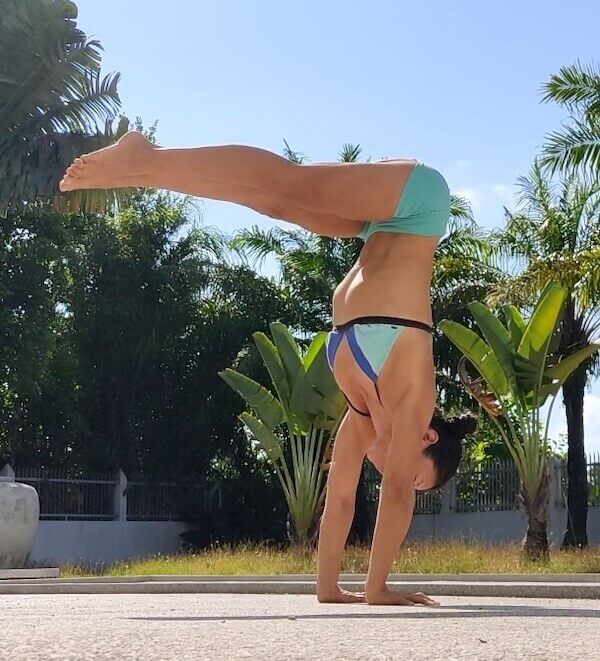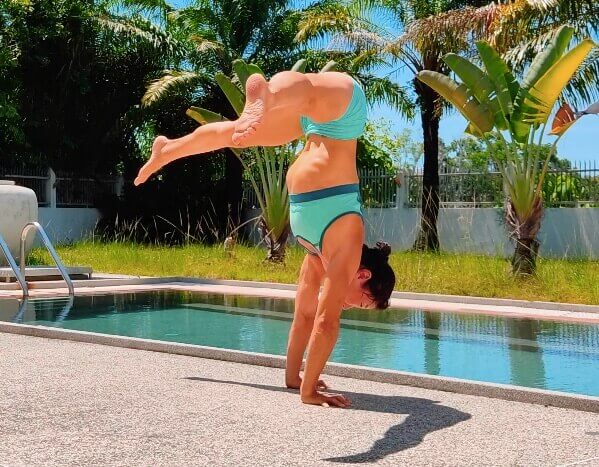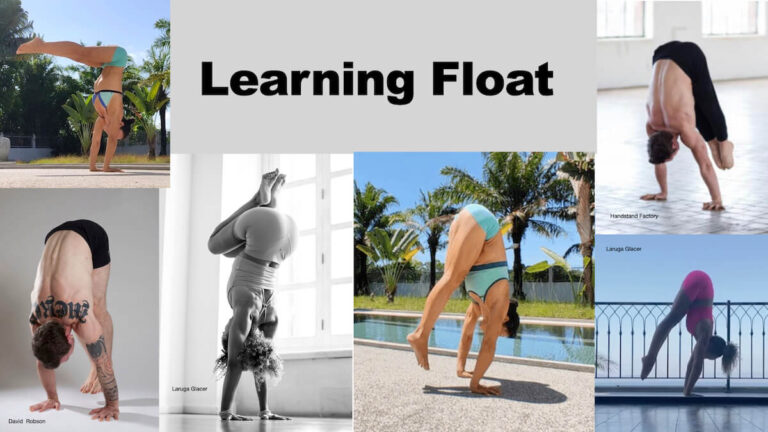The unique combination of strength, flexibility, and coordination is what makes the press to handstand such a fun skill. What I mostly love is the feeling of the float.
Handstand work is a never-ending project.
The necessary focus is to learn to float, to be able to control your feet going off the ground to press. Working halfway "L-shape" or "Straddle" is a good way to build a good foundation, it is easier to balance as well. Working this way, one thing will lead to another and suddenly that challenging press will also start coming your way. Anyway over time of practice the ease will come after a while as you figure out how your body works best.
In this article, I will highlight some effective drills to learn the float for press handstands.
There are many ways to achieve this skill but to be efficient, stable, and clean, the ingredients for anyone are pretty much the same. You need to gain flexibility in hamstrings, develop shoulder strength to push against the ground to bear your weight, the scapula mobility is the key to putting all the necessary pieces together to press/float off the ground.
Step 1 - Flexibility + Mobility + Strength
Hamstring flexibility to fold in half is the easiest path toward a straight handstand because you need a minimum amount of strength and control for the handstand. Because you are working on the press to handstand, focus on hamstring stretches for the best and fastest results. Educate your body on scapula protraction, retraction, depression, and elevation. Practice the shoulder strengthening drills such as Chest to Wall Walk, Hand Press Walk, Wrist Toe Taps. Core Compression drills are a great supplemental core ability workout. Again, closer you can bring your thighs to the torso, less shoulder strength is needed to press to handstand. Find your weakness and work on your weakness progressively. Be patient but practice daily. This is the best approach to achieve your goal in the shortest time.
Step 2 - An L-shape/Straddle Press to Handstand
Low balance such as an L-shape or Straddle Press to Handstand is something that is a relatively achievable goal and training for it will also be a fantastic way of training for the Press to Handstand.
What the L-shape and Straddle Press are doing is learning to control your legs and pelvis position.
From my experiments and feeling using legs and feet is playing an important role in the certain muscle engagement to float. While leaning forward on straight arms no matter straight or bent legs at starting position, attaching both thighs to the chest is the key at the first step, then as soon as your tailbone reaches the same line over your shoulders, you have no longer your weight on feet, at the same time flex your feet firmly to create the lifting force through your core muscle. The flexed feet generate the core engagement solid and you can even lift your tailbone to the sky effortlessly. As soon as you can balance that floating position, point the toes to activate the legs for nice tightness. You can feel magic stability in the halfway position. At this stage, you can either stay in an L-shape position or spread the legs wider. Either way, you need to hold all the body positions nice and solid to keep the air time.
The advantage of the halfway practice is that you can stay on your arms longer than trying further going up. That’s why the halfway practice is great to build up your arms and shoulders strength for the next level. Handstand practice is thousands of failings for all practitioners. Until you reach the level holding enough long, you can use these halfway drills to educate all necessary components for the press to handstand and build up your strengths.


Conclusion - Learning Float /Press to Handstand
Let’s summarize everything.
Train the Press to Handstand using a mixed approach of flexibility, mobility and strength.
Gain flexibility in hamstrings in order to bring your thighs to the chests touching for compression. Leaning forward is much easier with less shoulder strength to press
Gain awareness in your scapula and push your shoulders tall towards the ears. Educate your body positional patterns in your hips and pelvis by training L-shape press and Straddle press. Include other shoulder strengthening drills in your practice such as Chest to Wall Walk, Hand Press Walk, Wrist Toe Taps. If you have no idea what these exercises are and want to learn how to do all of them in a stepwise program you can check out my press handstand beginner’s program.
Please feel free to comment with any questions or feedback on the blog. I am happy to hear from you. Enjoy your handstand journey!
For an absolute beginner to the handstand, I have an ultimate beginner’s press handstand online program. Check “Home” in Menu above or click the logo on the top.

